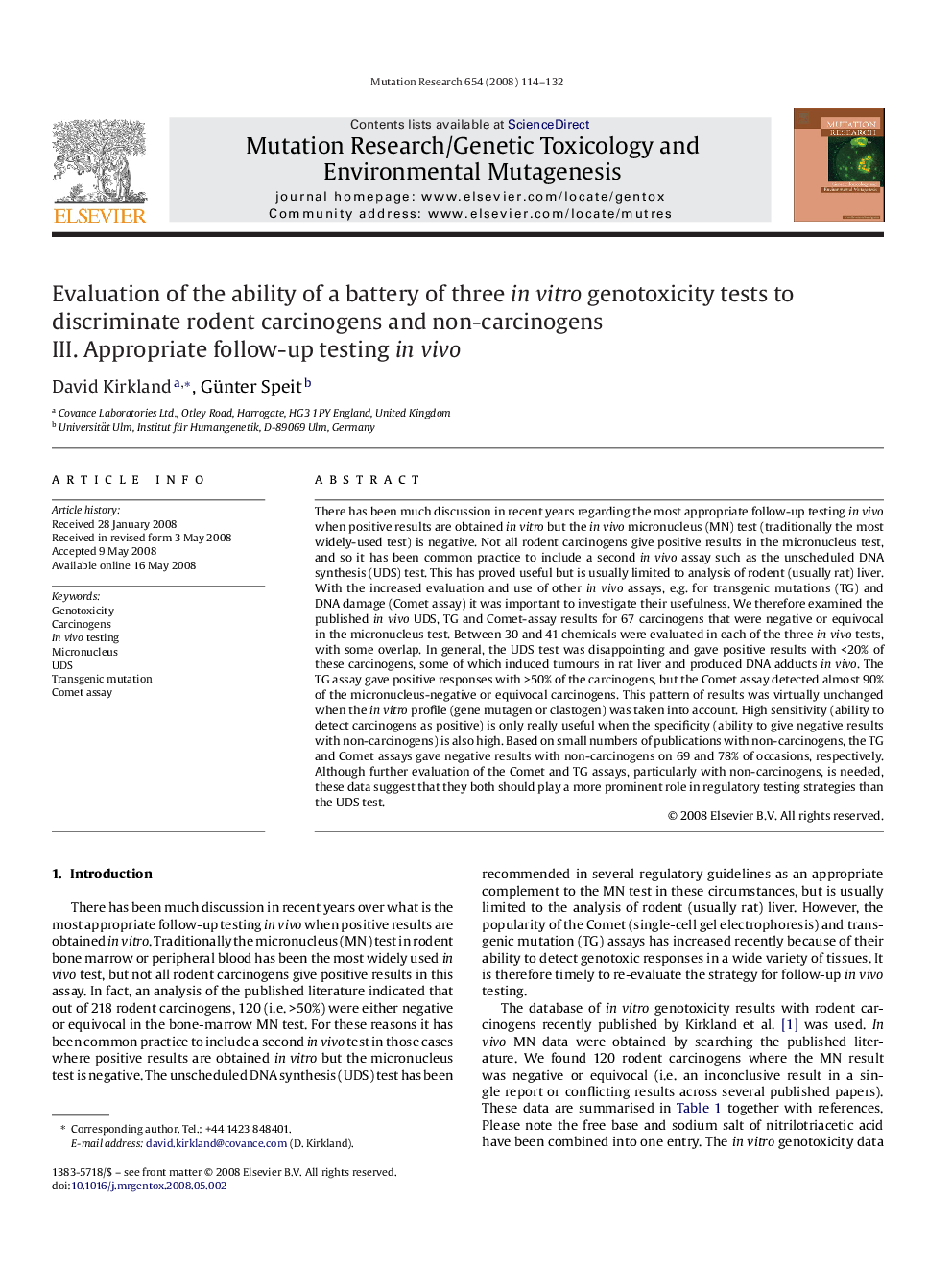| کد مقاله | کد نشریه | سال انتشار | مقاله انگلیسی | نسخه تمام متن |
|---|---|---|---|---|
| 2148918 | 1089589 | 2008 | 19 صفحه PDF | دانلود رایگان |

There has been much discussion in recent years regarding the most appropriate follow-up testing in vivo when positive results are obtained in vitro but the in vivo micronucleus (MN) test (traditionally the most widely-used test) is negative. Not all rodent carcinogens give positive results in the micronucleus test, and so it has been common practice to include a second in vivo assay such as the unscheduled DNA synthesis (UDS) test. This has proved useful but is usually limited to analysis of rodent (usually rat) liver. With the increased evaluation and use of other in vivo assays, e.g. for transgenic mutations (TG) and DNA damage (Comet assay) it was important to investigate their usefulness. We therefore examined the published in vivo UDS, TG and Comet-assay results for 67 carcinogens that were negative or equivocal in the micronucleus test. Between 30 and 41 chemicals were evaluated in each of the three in vivo tests, with some overlap. In general, the UDS test was disappointing and gave positive results with <20% of these carcinogens, some of which induced tumours in rat liver and produced DNA adducts in vivo. The TG assay gave positive responses with >50% of the carcinogens, but the Comet assay detected almost 90% of the micronucleus-negative or equivocal carcinogens. This pattern of results was virtually unchanged when the in vitro profile (gene mutagen or clastogen) was taken into account. High sensitivity (ability to detect carcinogens as positive) is only really useful when the specificity (ability to give negative results with non-carcinogens) is also high. Based on small numbers of publications with non-carcinogens, the TG and Comet assays gave negative results with non-carcinogens on 69 and 78% of occasions, respectively. Although further evaluation of the Comet and TG assays, particularly with non-carcinogens, is needed, these data suggest that they both should play a more prominent role in regulatory testing strategies than the UDS test.
Journal: Mutation Research/Genetic Toxicology and Environmental Mutagenesis - Volume 654, Issue 2, 31 July 2008, Pages 114–132